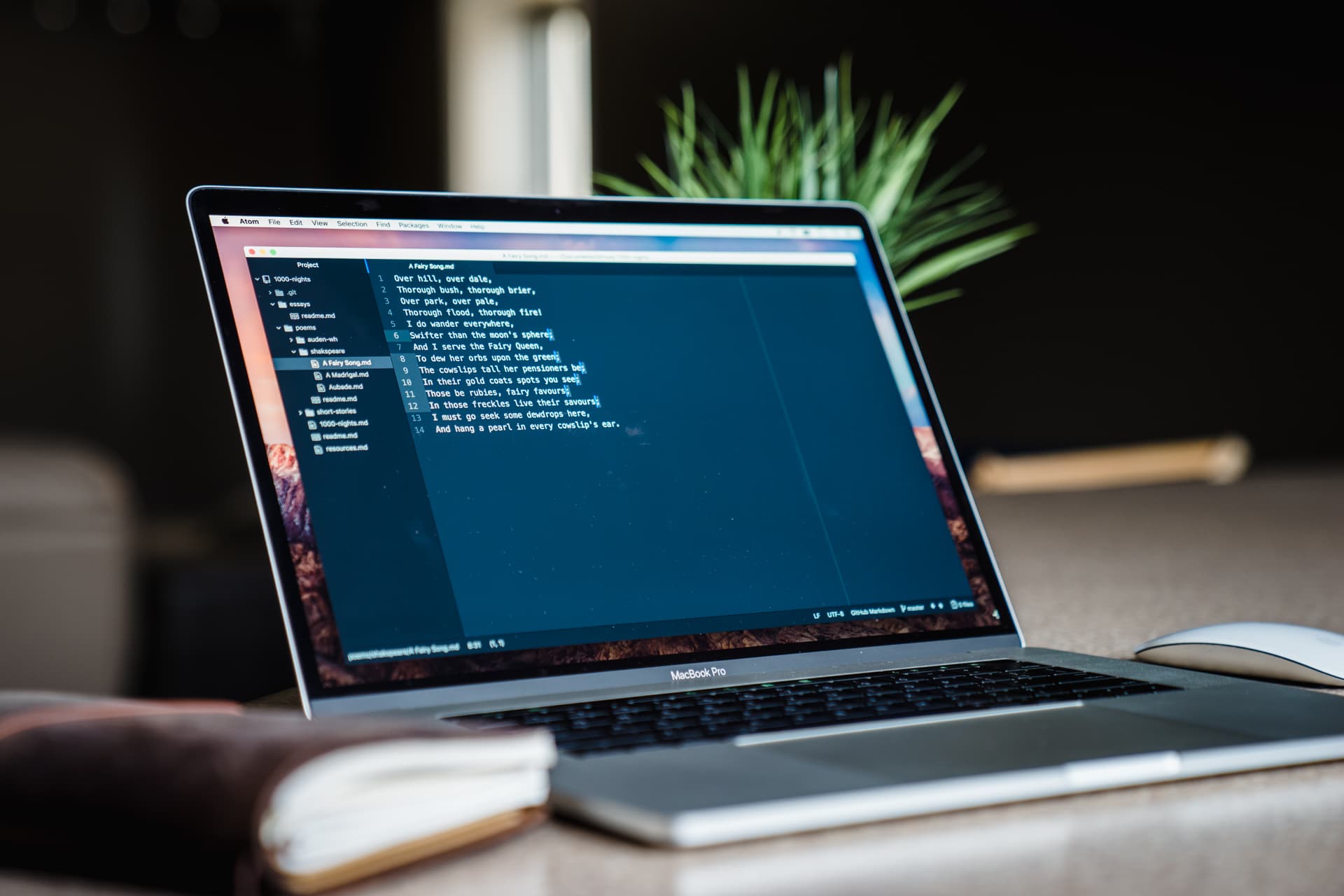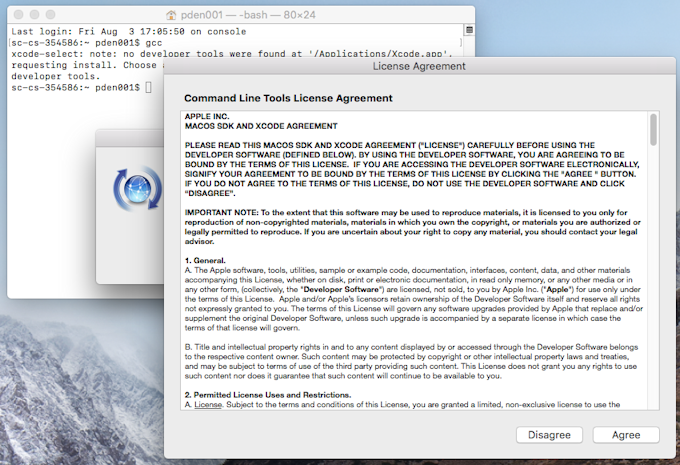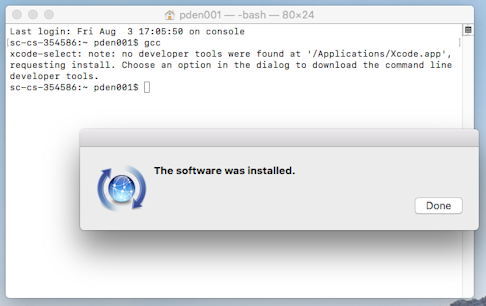
- Supported version: 0.6.7
Note: We recommend to move the Install macOS.app into the /Applications folder, as we'll be executing commands from there. Note 2: Running Cmd+Shift+G in Finder will allow you to easily jump to /macOS-installer; From here, jump to Setting up the installer to finish your work. # Downloading macOS: Legacy OS. Mac's that came with 10.6.3 or later need machine specific disks from Apple by calling them and providing the serial number. Mac's that orginally came with 10.7 or later cannot use the 10.6 disks. If your Mac model is pre 2010, then you should be good on the 10.6 white disks, if 2010 or later then it's more likely you need machine specific. Mono runs on Mac, this page describes the various features available for users who want to use Mono or Mono-based technologies on macOS. Installing Mono on macOS is very simple: Download the latest Mono release for Mac; Run the.pkg file and accept the terms of the license. Mono is now installing. Select the “ Mac OS X x64 ” option in the above link. 4) Once the download is complete, install the same on your machine. 5) Download the SAP GUI for JAVA, from sap service market place, download centre by following the below link. A- Z Index SAP Support Portal. 6) Click on the Index “G”.
While you don't need a fresh install of macOS to use OpenCore, some users prefer having a fresh slate with their boot manager upgrades.
To start we'll want to grab ourselves a copy of macOS. You can skip this and head to formatting the USB if you're just making a bootable OpenCore stick and not an installer. For everyone else, you can either download macOS from the App Store or with Munki's script.
# Downloading macOS: Modern OS
- This method allows you to download macOS 10.13 and newer, for 10.12 and older see Downloading macOS: Legacy OS
From a macOS machine that meets the requirements of the OS version you want to install, go directly to the App Store and download the desired OS release and continue to Setting up the installer.
For machines that need a specific OS release or can't download from the App Store, you can use the Munki's InstallInstallMacOS utility.
In order to run it, just copy and paste the below command in a terminal window:
As you can see, we get a nice list of macOS installers. If you need a particular versions of macOS, you can select it by typing the number next to it. For this example we'll choose 10:
- macOS 11, Big Sur Note: As this OS is quite new, there's still some issues with certain systems to resolve. For more information, see here: OpenCore and macOS 11: Big Sur
- For first time users, we recommend macOS 10.15, Catalina
- Nvidia GPU Note: Reminder to verify whether your hardware support newer OSes, see Hardware Limitations
This is going to take a while as we're downloading the entire 8GB+ macOS installer, so it's highly recommended to read the rest of the guide while you wait.
Once finished, you'll find in your ~/macOS-Installer/ folder a DMG containing the macOS Installer, called Install_macOS_11.1-20C69.dmg for example. Mount it and you'll find the installer application.
- Note: We recommend to move the Install macOS.app into the
/Applicationsfolder, as we'll be executing commands from there. - Note 2: Running Cmd+Shift+G in Finder will allow you to easily jump to
~/macOS-installer
From here, jump to Setting up the installer to finish your work.
# Downloading macOS: Legacy OS

This method allows you to download much older versions of OS X, currently supporting all Intel versions of OS X(10.4 to current)
- Legacy macOS: Offline method
- 10.10-10.12 Supported
- Legacy macOS: Online method(10.7-10.15 Supported)
- 10.7-11 Supported
- Legacy macOS: Disk Images
- 10.4-10.6 Supported
- Legacy macOS: Offline method
# Setting up the installer
Now we'll be formatting the USB to prep for both the macOS installer and OpenCore. We'll want to use macOS Extended (HFS+) with a GUID partition map. This will create two partitions: the main MyVolume and a second called EFI which is used as a boot partition where your firmware will check for boot files.
- Note: By default, Disk Utility only shows partitions – press Cmd/Win+2 to show all devices (alternatively you can press the View button)
- Note 2: Users following 'Legacy macOS: Online method' section can skip to Setting up OpenCore's EFI environment
Next run the createinstallmedia command provided by Apple(opens new window). Note that the command is made for USB's formatted with the name MyVolume:
This will take some time so you may want to grab a coffee or continue reading the guide (to be fair you really shouldn't be following this guide step by step without reading the whole thing first).
You can also replace the createinstallmedia path with that of where your installer's located (same idea with the drive name).
Pulled from Apple's own site: How to create a bootable installer for macOS(opens new window)
# Legacy Setup
For systems not supporting UEFI boot, see below:
To start, you need the following:
- BootInstall_IA32.tool or BootInstall_X64.tool
- This can be found in OpenCorePkg under
/Utilties/LegacyBoot/
- This can be found in OpenCorePkg under
- Install USB(Created above)
Within your OpenCore build folder, navigate to Utilities/LegacyBoot. Here you'll find a file called BootInstall_ARCH.tool. What this does is install DuetPkg to your desired drive.
Now run this tool in terminal with sudo(This tool will likely fail otherwise):
This will give you a list of available disks, choose yours and you will be prompted to write a new MBR. Choose yes[y] and you'll be finished.
This will provide you with an EFI partition with either a bootia32 or bootx64 file
# Setting up OpenCore's EFI environment
Setting up OpenCore's EFI environment is simple – all you need to do is mount our EFI system partition. This is automatically made when we format with GUID but is unmounted by default, this is where our friend MountEFI(opens new window) comes in:

You'll notice that once we open the EFI partition, it's empty. This is where the fun begins.
# Now with all of this done, head to Setting up the EFI to finish up your work
-->Important
This topic describes how to install the Azure classic CLI. The classic CLI is deprecated and should only be used with the classic deployment model.For all other deployments, use the Azure CLI.
Quickly install the Azure classic CLI to use a set of open-source shell-based commands for creating and managing resources in Microsoft Azure. You have several options to install these cross-platform tools on your computer:
- npm package - Run npm (the package manager for JavaScript) to install the Azure classic CLI package on your Linux distribution or OS. Requires node.js and npm.
- Installer - Download an installer for easy installation on macOS or Windows.
- Docker container - Start using the classic CLI in a ready-to-run Docker container. Requires a Docker host.
For more options and background, see the project repository on GitHub.
Once the Azure classic CLI is installed, connect with azure login and run the azure commands from your command-line interface (Bash, Terminal, Command prompt, and so on) to work with your Azure resources.
Option 1: Install an npm package

To install the classic CLI from an npm package, make sure you have downloaded and installed the latest Node.js and npm. Then, run npm install to install the azure-cli package:
On Linux distributions, you might need to use sudo to successfully run the npm command, as follows:
Note
If you need to install or update Node.js and npm on your OS, we recommend that you install Node.js LTS version 4.x or later. If you use an older version, you might get installation errors.
Install G++ With Macports
If you prefer, you may also download a tar file from the GitHub releases. Then, install the downloaded npm package as follows (on Linux distributions you might need to use sudo):
Option 2: Use an installer
If you use a Mac or Windows computer, DMG and MSI installers are available from GitHub releases.
How To Install G++ On Mac
Tip
On Windows, you can also download the Web Platform Installer to install the classic CLI. This installer gives you the option to install additional Azure SDK and command-line tools.
Install G++ On Mac
Option 3: Use a Docker container
If you have set up your computer as a Docker host, you can run the Azure classic CLI in a Docker container. Run the following command (on Linux distributions you might need to use sudo):
Run Azure classic CLI commands
After the classic CLI is installed, run the azure command from your command-line user interface (Bash, Terminal, Command prompt, and so on). For example, to run the help command, type the following:
Note
On some Linux distributions, you may receive an error similar to /usr/bin/env: ‘node’: No such file or directory. This error comes from recent installations of Node.js being installed at /usr/bin/nodejs. To fix it, create a symbolic link to /usr/bin/node by running this command:
To see the version of the Azure classic CLI installed, type the following:
Note
When you first use Azure classic CLI, you see a message asking if you want to allow Microsoft to collect usage information. Participation is voluntary. If you choose to participate, you can stop at any time by running azure telemetry --disable. To enable participation at any time, run azure telemetry --enable.
Update the classic CLI
Microsoft may release updated versions of the Azure classic CLI. Reinstall the classic CLI using the installer for your operating system, or run the latest Docker container. Or, if you have the latest Node.js and npm installed, update by typing the following (on Linux distributions you might need to use sudo).
Enable tab completion
Install G++ Mac Without Xcode
Tab completion of classic CLI commands is supported for Mac and Linux.
To enable it in zsh, run:
To enable it in bash, run:
Next steps
- To learn more about the Azure classic CLI, download source code, report problems, or contribute to the project, visit the GitHub repository for the Azure classic CLI.
